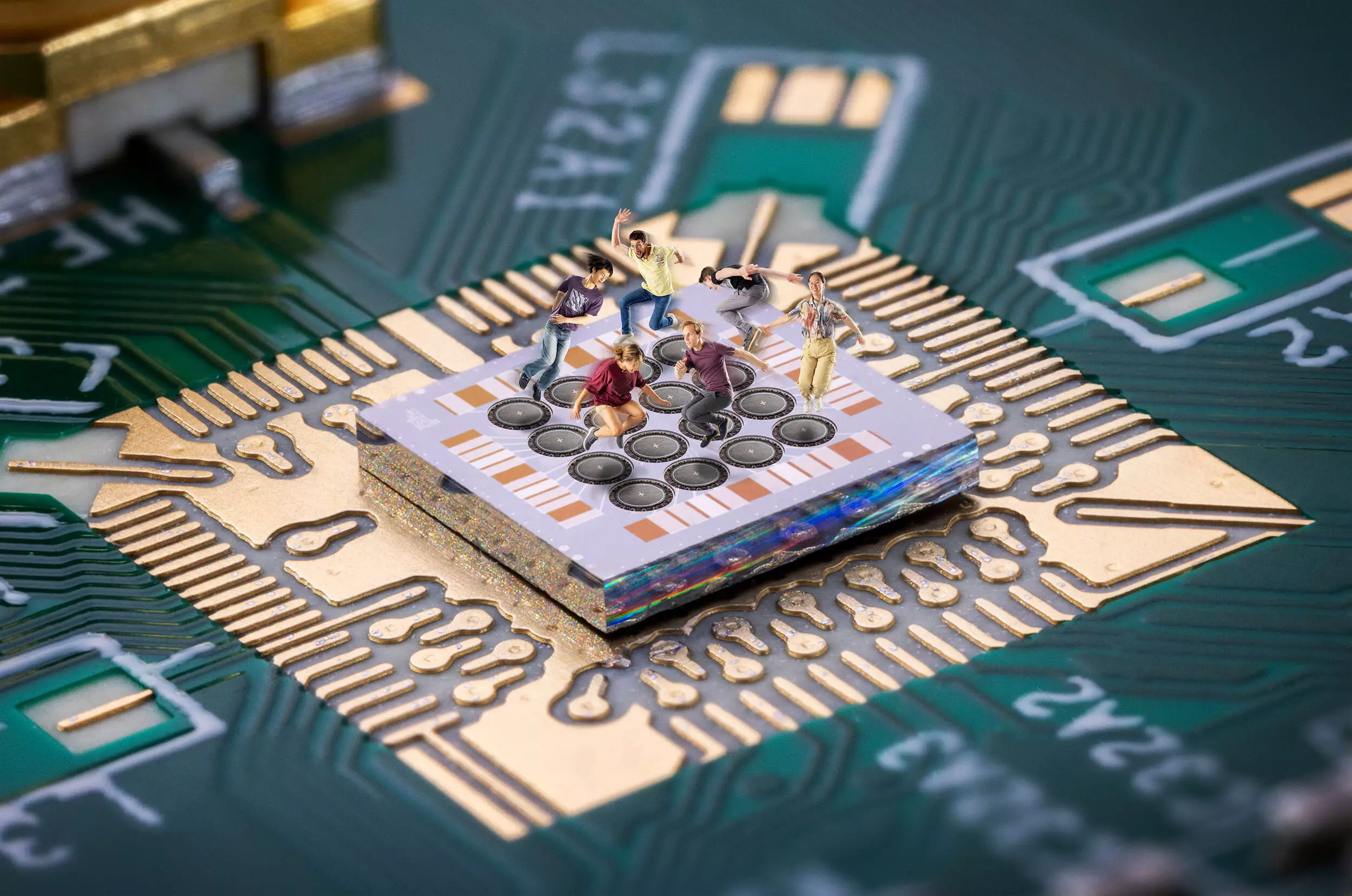In the complex race toward realizing practical quantum computing, a groundbreaking achievement by QuTech has captured the spotlight: the development of somersaulting spin qubits that promise universal quantum logic. This innovation could significantly enhance the efficiency of controlling large arrays of semiconductor qubits, a crucial factor in the race for scalable quantum processors. The research, prominently published in *Nature Communications* and *Science*, embodies the culmination of theoretical ideas presented over two decades ago, now successfully translated into experimental reality.
The seminal work from 1998 by Loss and DiVincenzo set the stage for what would become a long, intricate journey through the world of quantum mechanics. Their concept of “hopping spins” as a foundational building block for qubit logic had remained largely theoretical for over 20 years. With QuTech’s latest demonstration, however, we are witnessing a pivotal moment where theory and experimentation harmonize at an unprecedented level.
Redefining Spin Qubit Control
Traditionally, researchers have focused on trapping electrons within quantum dots, which are minute semiconductor structures, and controlling their spins through external microwave signals. This method, while effective, introduces a level of complexity that can hinder scalability. However, the team at QuTech has introduced a paradigm shift: they have successfully demonstrated that universal qubit control can be achieved using baseband signals in conjunction with small magnetic fields—eliminating the need for cumbersome microwave setups.
This development is monumental as it streamlines the integration of control electronics, potentially making future quantum processors less daunting in terms of operational infrastructure. The researchers accomplished this by harnessing hopping spins that flow from one quantum dot to another, enabling direct manipulation of spin orientations without the typical reliance on extensive machinery.
The Germanium Advantage
Central to QuTech’s innovation is the clever application of germanium. This material not only serves as the medium for qubit implementation but has also proven to facilitate spin rotations autonomously—revolutionizing the control mechanisms previously proposed. This stands in stark contrast to past methodologies that required complex magnetic systems.
In their publication in *Nature Communications*, the team detailed observations of spin rotations, suggesting that germanium’s unique properties allow for effective control over hopping spins, akin to individuals navigating a trampoline park. Instead of each electron being confined to its designated quantum dot—a trampoline—researchers have demonstrated the ability for spins to navigate freely between quantum dots, experiencing the spins’ dynamics in a new and innovative fashion.
The Mechanics of Hopping and Somersaulting Spins
By envisioning quantum dot arrays as interconnected trampolines, the concept of somersaulting takes on a colorful analogy. As spins “jump” from one dot to another, they gain a “torque” that induces rotations, thereby enhancing control capabilities. Chien-An Wang, the first author of the *Science* publication, highlights that germanium’s capacity to align spins in diverse directions across different quantum dots paves the way for the creation of high-caliber qubits through hopping.
With error rates dropping to remarkable levels—less than one thousand for one-qubit gates and under one hundred for two-qubit gates—the implications for quantum computing become increasingly significant. Such proficiency in control indicates a solid foundation upon which future quantum processors can be developed, representing a leap forward in technological capability.
Probing the Future: Complex Qubit Interactions
The QuTech team did not rest on their laurels after establishing control over pairs of spins. They ambitiously set out to explore hopping among several quantum dots, which would allow for more radical forms of qubit interaction. This exploration mirrors the exhilarating experience of a user somersaulting across multiple trampolines—each unique jump contributing to a larger narrative.
With established routines enabling hops across ten quantum dots, researchers can now assess a plethora of qubit metrics within expansive systems. This ability to characterize variability within different quantum environments sets the stage for a deeper understanding of quantum interactions, crucial for advancing the field.
A Collective Effort towards Quantum Mastery
At the heart of this scientific endeavor lies an impressive team dynamic, with principal investigator Menno Veldhorst expressing pride in the collaborative spirit that propelled this research forward. Within just a year, the transformation from observing qubit dynamics to actively utilizing those observations marks a significant milestone for the group.
Such synergy encapsulates the essence of scientific advancement in the realm of quantum computing, illustrating that when innovative theories are merged with relentless experimentation, we can break through the barriers of understanding and open new pathways toward realizing powerful quantum technologies. Each qubit achieved, every hopping spin measured, reflects not only individual brilliance but a collective commitment to ushering in the next era of computing.
As we continue to explore the potential of somersaulting spin qubits, the dream of a universal quantum logic becomes an ever more attainable reality, one jumping spin at a time.

